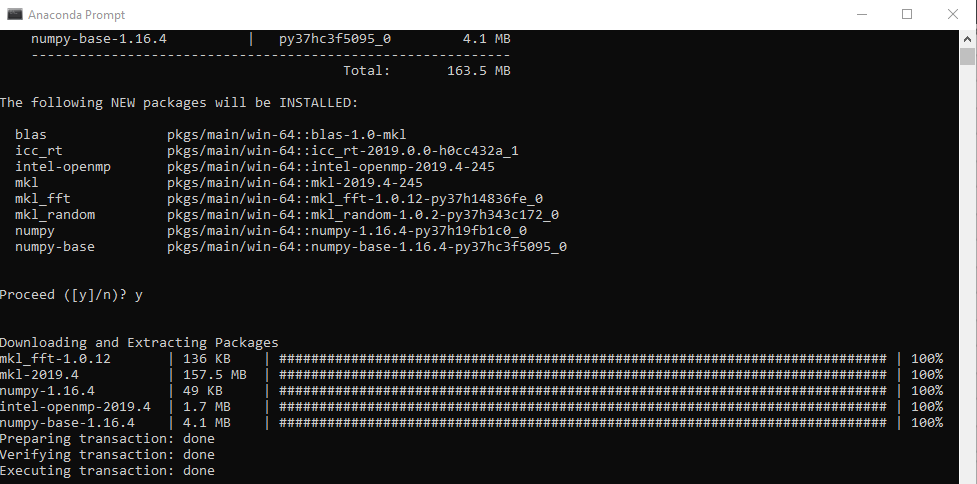

- #Anaconda prompt adding module to path how to#
- #Anaconda prompt adding module to path install#
- #Anaconda prompt adding module to path update#
- #Anaconda prompt adding module to path pro#
#Anaconda prompt adding module to path install#
Choose any destination folder according to your liking and uncheck Add anaconda. To install a specific package, type conda install -nFor example, the following will create a Python installation with Python version 2.7 and NumPy version 1.16: conda create -n local python2.7 numpy1.
Specific versions can be specified by adding#Anaconda prompt adding module to path pro#
Each Python environment can have its own set of packages, allowing you to switch between sets of Python functionality without uninstalling and reinstalling packages each time.īy default, ArcGIS Pro has a single conda environment, arcgispro-p圓, which includes all Python libraries used by ArcGIS Pro as well as several others, such as scipy and pandas. Follow through the instructions for installing as shown in the next few images. conda create -n local numpy babel By default, conda will install the newest versions of the packages it can find. Download git files Clone or download git hub files in some directory. pip install numpy pip install scikit-learn Add packages to the Anaconda environment using git. Open Anaconda Command prompt as administrator Use cd\ to come out of the set directory or path. To further extend the versatility and utility of Python packages, multiple Python environments can coexist on a single workstation, independent of one another. Add packages to the Anaconda environment using the pip command. Click Interpreter settings and select Add.
You can also access conda from a command prompt. Create a new environment Press Ctrl+Alt+S and go to Project#Anaconda prompt adding module to path update#
Step 3: Here, you can click on apply to install or update your packages. Search your package in the upper right search bar. ArcGIS Pro integrates conda with the Package Manager page. Step 1: Open your Anaconda navigator Step 2: Go to the Environment tab. To support Python packages, ArcGIS Pro includes a package management system named conda.

See a comparison of the package managers here. Search for Python books on Amazon Install With PipĪnaconda prefers to use its own ‘ conda‘ package manager, but it’s also possible to install packages using pip – the PyPA recommended tool for installing Python packages. The easiest way to do this is to grab the target path from the Anaconda Prompt shortcut. You’ll also need to pick between 32- or 64-bit.

You’ll want to pick the right version of Python – you probably want version 2.7, but check your Anaconda distribution. In this example I’m going to be installing the ‘Shapely’ geometry package, available from here: Accept the Licence Agreement and allow Anaconda to be added to your PATH. Download the ‘wheel’įind and download your whl file. Run the bash script to install Anaconda3.
#Anaconda prompt adding module to path how to#
Here’s how to install a whl package in the Anaconda Python distribution from Continuum Analytics. These are Anaconda whl install instructions. The whl format is a special zip format for Python packages.


 0 kommentar(er)
0 kommentar(er)
